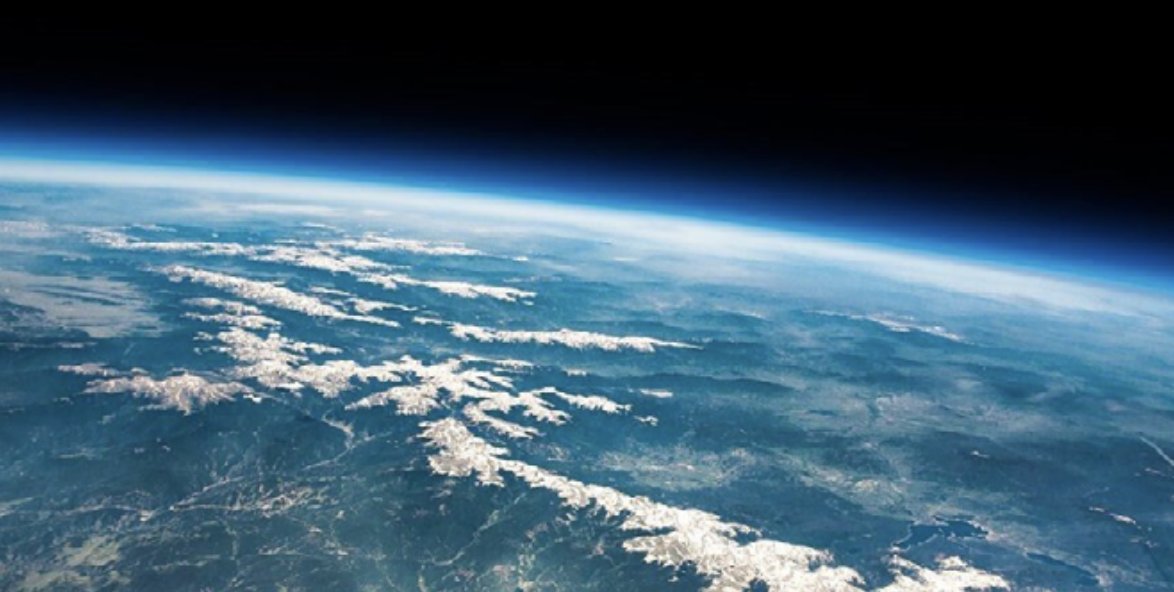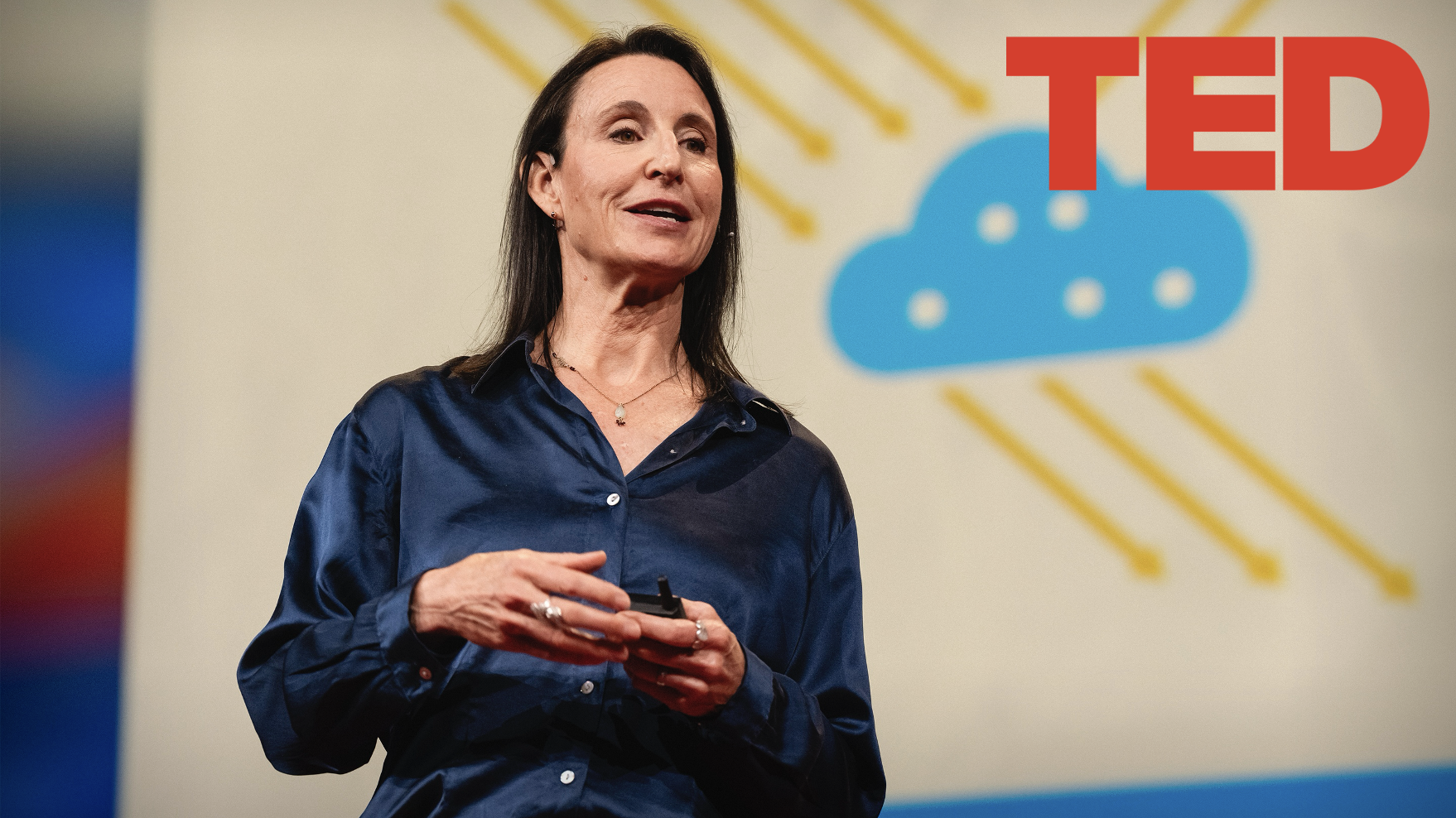SilverLining — 5 Years of Impact: Scientific Research
In 2024, SilverLining celebrated its five-year anniversary. At this milestone, we are reflecting on our progress across the many initiatives that collectively deliver against our mission of ensuring a safe and secure Earth System. Our goals since 2019 have been: to drive information on near-term Earth system risks and possible responses, to expand the community of knowledgeable stakeholders, and to promote approaches for making effective decisions that would keep people and natural systems safe and secure. With our broad community of collaborators, we have met or exceeded many of our objectives, but the urgency has intensified.
SilverLining’s physical sciences research includes two major initiatives, advancing research and development to accelerate an evaluation of the safety and risks of Earth system change with and without sunlight reflection — the Safe Earth System Research Initiative, and our efforts to fill critical gaps in atmospheric observations — our Earth Information Programs. These initiatives deliver against a collaboratively defined roadmap for research described in our report on Earth system safety and security: A Roadmap for Research, U.S. Research Investment and International Scientific Cooperation. The report identifies critical gaps in observations, models and process studies relating to the influence of aerosols on the atmosphere, clouds and the Earth system. These gaps have become more prominent with recent concerns about the cooling effects of shipping aerosols and anthropogenic particles in the low atmosphere, and newly observed anthropogenic particles in the stratosphere. The research initiatives described here embody our coordinated effort to advance the critical science required for sufficient understanding of near-term Earth system risks and possible responses, in order to assess them effectively.
Raising over $20 million in funding for research, SilverLining has directly and indirectly supported extraordinary programs and teams at leading universities, government agencies, national meteorological centers and research laboratories. We are grateful to our collaborators and institutional partners, and the generous funders of our efforts, for their support in advancing this critical science for the public good.
Safe Earth System Research Initiative
SilverLining's Safe Earth System Research Initiative (SESRI) collaboratively defines (roadmaps) for scientific research and supports studies to advance society’s understanding of near-term Earth system risks and possible responses. These center on a key driver of near-term Earth system change, and of the most prominent form of sunlight reflection: the influence of aerosols on clouds and the Earth system.
SESRI has made over $7 million in grants, and directed an additional $15 million in funding, supporting over 70 researchers worldwide, including the US, Canada, the UK, Europe, Africa and elsewhere. SESRI awardees and collaborators include leading researchers from national centers, like the UK Met Office and the National Center for Atmospheric Research (NCAR), atmospheric science centers of excellence, like the University of Washington and Colorado State University, and Earth systems and impacts studies centers including Rutgers University, Cornell University, University of Cape Town, Desert Research Institute.
A catalyst for SRM science, the SESRI has generated over 30 peer-reviewed publications, new Earth system and atmospheric process model capabilities, a new talent pipeline of early-career researchers and support for early-career researchers’ presentations at conferences and meetings. Importantly, it has generated substantial science and information on research requirements that have informed official reports, policy processes and dialogues, notably the 2022 UN Ozone Assessment, UN Environment Programme: One Atmophere and the recent US government report on SRM research.
Roadmap Development
In 2020, SilverLining team members began collaborating with researchers to define a roadmap of the research, observations, model enhancements and technology innovation required to assess the potential for solar radiation modification (SRM) to reduce near-term Earth system risk within 5 years. In 2023, we published this 5-year roadmap as both a peer-reviewed paper and major report calling for $2.6 billion in new annual funding for U.S. basic Earth system research—$13 billion over 5 years—to provide the capabilities and resources needed to assess the impacts of anthropogenic aerosols on Earth system and the stratosphere, as well as the potential for SRM approaches to improve near-term Earth system safety and security. With these funding estimates, this first-of-its-kind report complemented a landmark Congressionally-mandated report from the White House Office of Science and Technology Policy (OSTP),which was supported by SilverLining’s advocacy efforts. SilverLining’s research programs are designed to collaboratively evolve and advance against this roadmap.
Richter et al, 2022, Assessing Responses and Impacts of Solar climate intervention on the Earth system with stratospheric aerosol injection (ARISE-SAI): protocol and initial results from the first simulations. Read the paper.
Assessing Impacts and Responses of Intervention on the Earth System (ARISE)
The Assessing Impacts and Responses of Intervention on the Earth System (ARISE) Program is a collaboration among senior Earth system model developers and Earth system impacts researchers to define, develop, and deliver high-fidelity (representing, in detail, relevant systems and processes) simulations of scenarios for near-term Earth system change and possible responses.
The effort began in 2020 with the first-ever high-fidelity Earth system model simulations of Stratospheric Aerosol Injection (SAI) under median scenarios for Earth system change using two major Earth system models—the National Center for Atmospheric Research’s Community Earth System Model (CESM) and the UK MET Office UK Earth System Model (UKESM). These simulations produced an unprecedented and highly comprehensive dataset for studying the influence of SAI on the Earth and natural systems — now widely adopted by researchers.
The ARISE dataset was used to support analysis of coupled Earth system processes with respect to Earth system change and possible responses. Researchers at Cornell University used ARISE to help define the parameter space of SAI interventions. Studies led by scientists at Colorado State University integrated AI into Earth system modeling to detect and attribute SAI interventions. Rutgers University's RISCI lab is using the highly detailed ARISE model outputs for novel studies of the effects of SAI on agricultural crops. The UK Met Office is undertaking the first model intercomparisons of high-fidelity SAI scenarios.
More recently, collaborators began the first-ever multi-model, high fidelity simulations of Marine Cloud Brightening (MCB) across three major Earth system models: CESM, the UK MET Office UKESM, and the Department of Energy's Energy Exascale Earth System Model (E3SM). This included an ongoing collaboration to enhance the representation of cloud aerosol processes in global Earth system models, a critical activity for all of Earth system science.
Advanced Analysis Techniques: ARISE simulations and cloud capabilities supported an innovative research effort at Colorado State university to use machine learning to detect the impacts of Earth system change, predict weather and Earth system behaviors a few weeks to decades into the future and explore the potential outcomes of SAI sunlight reflection. The effort was featured at the AWS advanced technology summit, Re:MARS, in a highly accessible and visual session. Watch the video here.
Cloud for Climate
Researchers in developing countries often have a limited ability to project and analyze Earth system impacts for their regions. One critical barrier is the opportunity to access and use the Earth system models and large datasets that require high performance computing, a barrier to many types of studies and most advanced research. SilverLining and its collaborators are working to overcome this and other barriers by making Earth system models and datasets available as services on the cloud and building related local expert technical capacity.
Earth system models are among the most computing intensive applications in the world. In collaboration with Amazon Web Services (AWS) and NCAR, as part of the ARISE program, SilverLining supported the first-ever full production Earth system model simulations on the public cloud, implementing CESM on AWS, an effort that took many months and involved advanced high-performance computing experts from both NCAR and SilverLining. This effort led to both the availability of simulation data sets on the cloud and the possibility of using the cloud for advanced Earth system model simulations from anywhere in the world.
The datasets from the ARISE simulations are openly available on the cloud, via the Amazon Sustainable Data Initiative, for access by researchers around the world, enabling more opportunities to study near-term Earth system risks and possible responses. Over time, we hope to make many of the world's leading global Earth system models, related datasets, and enabling tools available to researchers around the world as user-friendly services on the cloud. View a brief video or listen to the AWS podcast to learn more.
At the WCRP Open Science Conference in Kigali, Rwanda in October 2023, SilverLining, the African Institute of Mathematical Sciences (AIMS), NCAR and AWS hosted a workshop for researchers to gain hands-on experience running simulations on the CESM model using web-based services. More work is needed to deliver the required capabilities and support to a broad community of researchers, but a critical foundation has been laid.
Researchers Jessica Medrado and Dongyun Shin at Palo Alto Research Center (PARC) demonstrating the Cloud Aerosol Research instrument (CARI).
Marine Cloud Brightening (MCB) Program
SilverLining partners with, and supports, a landmark research program to improve understanding of one the greatest uncertainties in atmospheric science — the effects of aerosols on clouds and the Earth system — and to evaluate the potential for brightening marine clouds with sea-salt particles to reduce Earth system risks. Housed at the top institution for atmospheric science globally, the University of Washington, the program includes over 40 researchers and five institutional partners. Over the past five years, SilverLining provided funding, scientific collaboration, non-science program support and expertise to establish its technology research partnership with Palo Alto Research Center (now known as PARC, an SRI program).
These activities helped drive groundbreaking advances in this landmark effort including the delivery of the first-ever instrument for scaled aerosol generation for the controlled study of cloud-aerosol effects, the Cloud Aerosol Research Instrument (CARI). The program also integrated MCB R&D with SilverLining’s ARISE modeling efforts to help develop a roadmap of studies designed to produce realistic simulations of MCB, including pending publication of a protocol for simulation of Marine Cloud Brightening in global Earth system models. SilverLining’s Executive Director Kelly Wanser co-founded the UW MCB Program and it has partnered with SilverLining since SilverLining’s inception.
Scientists at the University of Central Florida lab.
SilverLining Stratospheric Aerosol Intervention (SSAI) Program
In 2022, SilverLining convened experts in stratospheric science and aerospace from NASA, NOAA and various universities to define a roadmap for research on the processes related to the effects of aerosols in the stratosphere. This roadmap outlined the research essential to understanding and projecting effects of the introduction of aerosols and other material into the stratosphere from various potential sources, including wildfires, space and air traffic and stratospheric aerosol injection (SAI), the most prominent form of sunlight reflection. SilverLining commenced a research program that now includes laboratory studies interfaced with modeling at various scales, along with the design of process studies in the atmosphere that together are designed to improve model projections of the effects of SAI at scales potentially large enough to significantly impact the Earth system. The SSAI program interfaces with ARISE to inform model representations and simulations of global Earth system effects and impacts.
Since its inception, the SSAI program has achieved several milestones in fundamental science on aerosol processes for sulfur dioxide and other materials, including high-fidelity aerosol-chemistry plume model simulations of stratospheric conditions and aerosol plumes.
Methane Oxidation
In 2021, SilverLining reviewed existing science and produced research recommendations for a proposed Earth system response: to reduce concentrations of methane in the atmosphere by dispersing iron salts to convert methane to CO2, also known as methane oxidation. On the basis of these findings, SilverLining supported researchers at Cornell University and the University of Copenhagen in undertaking laboratory-based characterization of the processes underlying iron salt methane oxidation and in the model development and simulations required to investigate the potential efficacy and impacts of their use at scale in the atmosphere. Those efforts produced two foundational publications and formed the basis of an ongoing international research collaboration, now being carried forward by Spark Climate Solutions as part of their Atmospheric Methane Removal program.
Earth Information Programs
A SilverLining scientific balloon engineer prepares radio receiving equipment; researchers release balloons at the University of Reunion.
Rapid Response Volcano Observations
Hunga Eruption Response Campaign, February 2022: In a groundbreaking effort enabled by support from the Gordon and Betty Moore Foundation, Schmidt Futures and Lyda Hill, SilverLining catalyzed rapid observations of the Hunga eruption, a rare large natural experiment on emissions into the atmosphere and opportunity to gain insights into the effects of emissions into the stratosphere. Supporting scientists at the University of Houston, the University of Reunion, and other institutions. Filling a gap in rapid funding capabilities, SilverLining facilitated a NOAA-led campaign to conduct balloon-based observations of the atmosphere during this rare event. The knowledge gained contributed to advancing understanding of atmospheric processes relevant to understanding of the effects of anthropogenic stratospheric particles and SAI, including improving model representations of stratospheric conditions. View images and learn more about this initiative here.
Reykjanes Eruption Response Campaign, December 2023: Building on learning from the Hunga response, SilverLining mobilized an effort to support observations of projected eruptions of the volcano in the Reykjanes peninsula of southwest Iceland. While smaller than Hunga, such eruptions can lead to emissions of material into the low-cloud layer whose study is relevant to understanding the Earth system effects of reductions in anthropogenic aerosols, such as the reductions in ship emissions arising from International Maritime Organization (IMO) regulations in 2020, as well as marine cloud brightening. When such eruptions occur, SilverLining will aim to support observations of a large natural experiment relevant to understanding cloud-aerosol effects and how they might influence the Earth system in the future.
Platforms of Opportunity
SilverLining’s Platforms of Opportunity Program aims to bridge large, critical gaps in Earth system-relevant atmospheric observations by leveraging commercial and other existing ships and aircraft to carry instruments for atmospheric observations.
Ships of Opportunity for Atmospheric Research (SOAR): The scarcity of observational data on gases and aerosols in the marine atmosphere poses a significant challenge in modeling and evaluating their influences on the Earth system and predicting future Earth system changes. In 2022, SilverLining established a collaborative network of atmospheric science, engineering, operations experts and other university, intergovernmental and US science agency leaders to analyze scientific requirements, instrument capabilities and possibilities for piloting and developing a global network of ship-based observations of gases and aerosols in the marine atmosphere. The resulting program, SOAR aims to build on research systems and existing Earth system observation data networks to expand coverage, particularly in remote and sensitive regions.
In collaboration with NOAA’s Global Monitoring Laboratory (GML), Accenture and Dutch maritime nonprofit OceansX, SilverLining supported a pilot of gas and aerosol radiative measurements from vessels operated by global shipping company Maersk. The objective is to leverage learning from these pilots to design a global ship-borne observing network and to develop instrument packages that have the advanced features of today’s bespoke research instruments as well as the operational features and cost profile required for scale.
Airplanes of Opportunity: In collaboration with NOAA GML, Airplanes of Opportunity supports the pilot and development of a network of atmospheric observing instruments on commercial aircraft to address critical data gaps in gases and other atmospheric measurements. With routes arcing from the surface to the upper atmosphere and back, aircraft platforms approach could transform observations of gas source emissions from the surface of the Earth, including anthropogenic sources and feedbacks from natural systems.
In 2021, NOAA led an engineering effort and regulatory approval process to install a package of sophisticated greenhouse gas and atmosphere observing instruments on a commercial aircraft, culminating in a pilot flight on the Alaska Airlines Boeing Ecodemonstrator. NOAA, SilverLining and other collaborators are developing a roadmap of requirements and plans for the development of instrument packages, operational models and carrier partnerships for a scaled network of observations.
SilverLining with the team at NOAA Chemical Science Laboratory. From left to right: Drew Rollins, Troy Thornberry, Gordan Novak, Kelly Wanser, NASA WB-57 preflight for campaign as part of NOAA’s Stratospheric Aerosol processes, Budget and Radiative Effects (SABRE) program
Stratospheric Observations
In late 2023, SilverLining partnered with Johns Hopkins University Applied Physics Laboratory (JHUAPL) to convene a working meeting of experts to discuss the state of efforts to monitor the stratosphere, the requirements and gaps, and what forums or workshops are needed to advance progress toward a comprehensive approach to safety and security for the Earth system and stratosphere.
The discussion featured recent findings from stratospheric sampling flights done as part of NOAA’s Stratospheric Aerosol processes, Budget and Radiative Effects (SABRE) mission to assess new aerosol populations in the stratosphere from large wildfires, air traffic, rocket emissions and debris from satellites. It highlighted the sparseness of stratospheric observations and a pending “data desert” associated with the end of life of a unique satellite instrument for global coverage of atmospheric constituents, the microwave limb sounder (MLS). SilverLining, JHUAPL and collaborators will expand the discussion to advance the definition of requirements and gaps in 2025.
The Path Forward
With research programs that outperformed expectations, SilverLining now is directing considerable energy driving philanthropic and public funding to support these remarkable researchers, institutions and research efforts in their next phases, and identifying and supporting other efforts and teams that can contribute to the mission of driving information to ensure a safe and secure Earth system. We welcome your help.
We are profoundly grateful to our collaborators, partners and funders who had the vision, insight and strength of purpose to work at the cutting edge of this complex, deeply important and sometimes misunderstood area of science. We look forward to advancing research together in 2025 and beyond.













